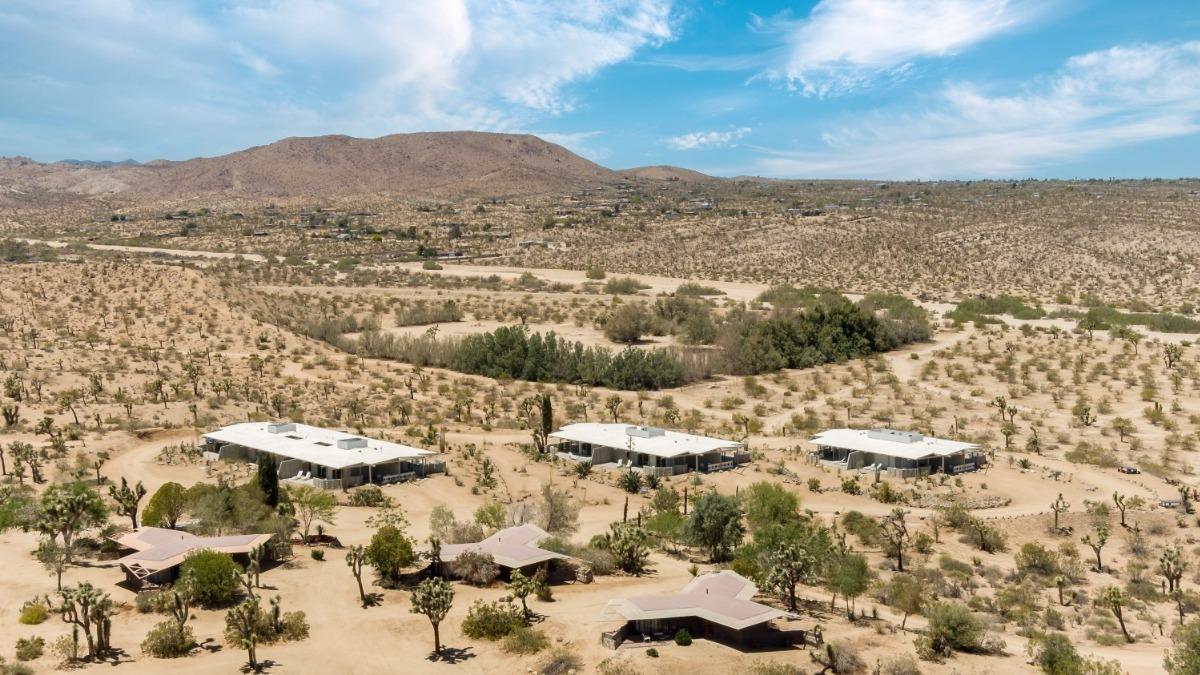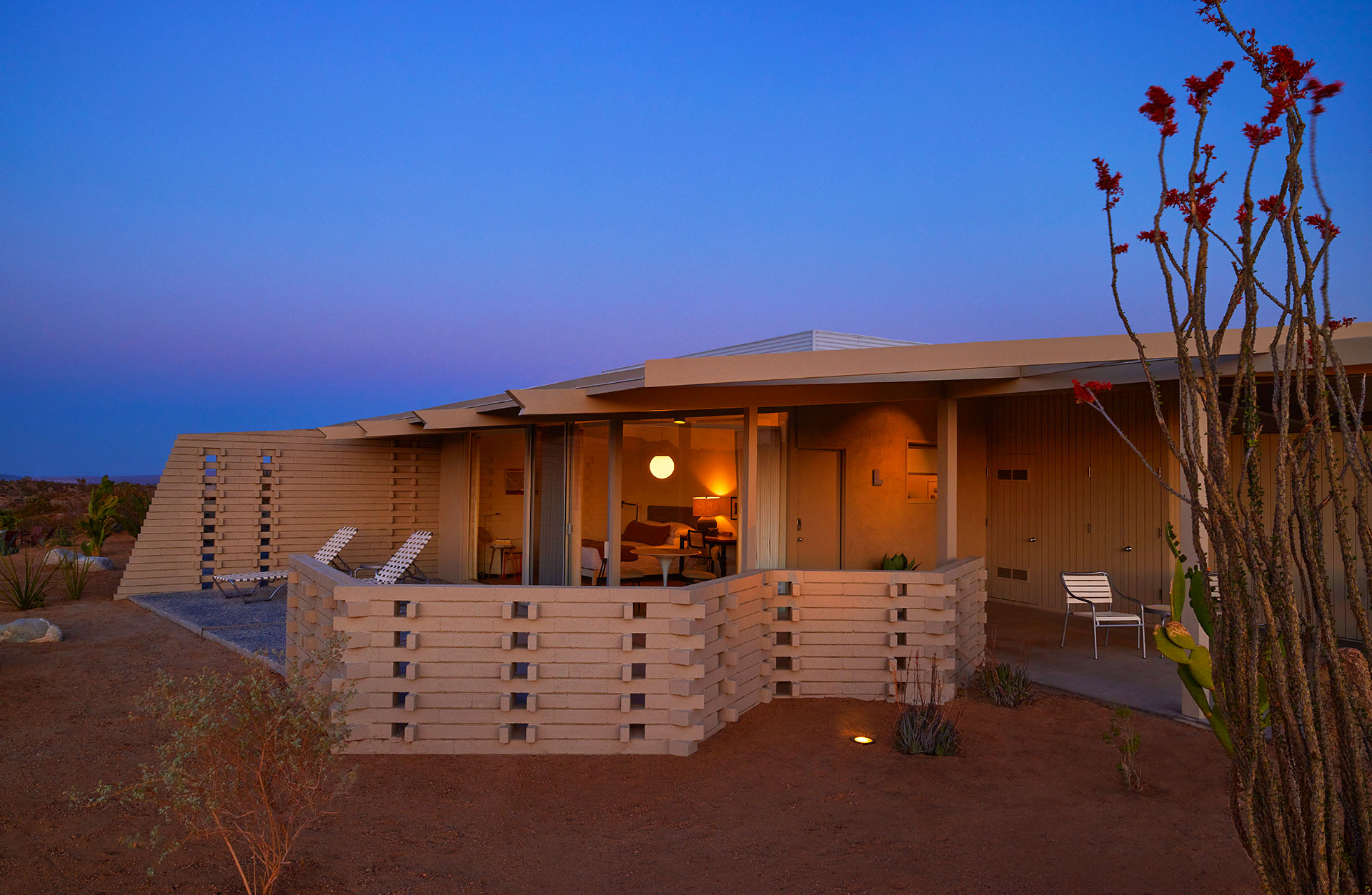On The Edge Of California’s Joshua Tree National Park Is A National Treasure Of Another Sort: The Bungalows, A Testament To Optimism And A Triumph Of Desert Modernism.
The Bungalows is not a traditional hotel. There’s no restaurant and no check-in. Before your trip, you’ll get instructions for your smart lock and the name of a good grocery store to fill your private kitchen. They’ll leave you the essentials, and some treats, and maybe even some sustainable produce if you request. Then they’ll leave you to it. There’s also a grill outside for guest use.
Does that all sound familiar? The Bungalows takes the best bits of home sharing and combines them with the ease and reliability of a hotel experience. And make no mistake, this is like staying in a home, albeit one that’s an authentic mid-century masterpiece.
The three buildings and fourteen suites of the stylish little Bungalows are set on the campus of the Joshua Tree Retreat Center. Built in large part by Lloyd Wright, son of Frank Lloyd Wright, the Retreat is among the most celebrated examples of organic modern architecture in the country; it’s also the headquarters of the Institute of Mentalphysics.
Mentalphysics was developed by Edwin Dingle, also known as guru Ding Le Mei, and is a kind of super yoga with a mystic twist. In the spirit of the Bungalows, we’ll leave it to you to investigate any further. We will report, though, that Dingle believed in the power of positive thinking. He dreamed of a utopia, a majestic “City of Joy,” not one “of asphalt, paving and steel” but “of the Desert, spacious, free-sweeping.” This was the promise of his Joshua Tree retreat.
Even if the city didn’t quite materialize on the scale he hoped, his aesthetic desires were actualized.



